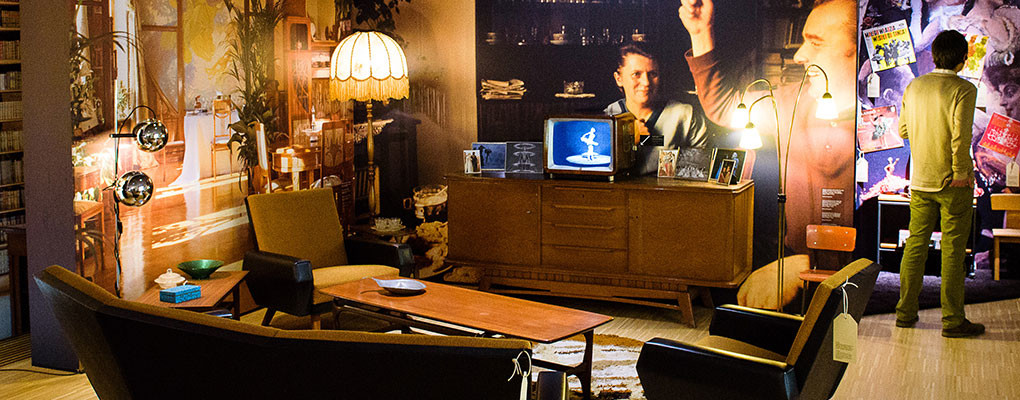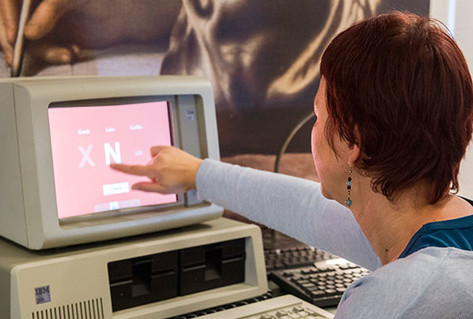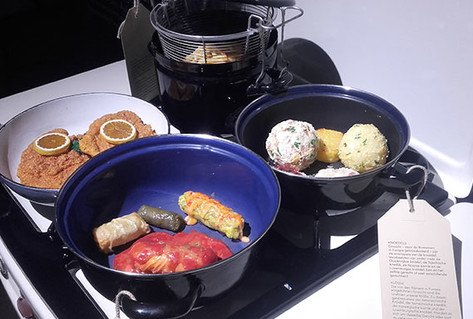
The House of European History's first temporary exhibition
All content development in the House of European History team is done on the basis of academic and museological standards, and on consultations with our Academic Committee. In this case, we undertook a wide brainstorming survey of many possible topics, carried out research on the more promising ones, and submitted a short list to the project's Academic Committee, which clearly pronounced itself in favour of this one. The topic was selected among others because it supplements the permanent exhibition by another perspective: it explores different forms of social and cultural interactions between Europeans, from Antiquity to today. Fighting, Trading, Negotiating and Learning are the interactions presented in the first space, while the second space will explore the cultural heritage resulting from exchanges.
Temporary exhibitions give us a great opportunity to develop our audience and provide them with a varied offer. For example, a temporary exhibition can follow the classical museum approach and be more object based, whilst the subsequent one could be more immersive, interactive, art-based, or even tailored for just on one part of society, such as children. By using this variety of themes and content, we can appeal to a range of audiences, including people who may not usually consider visiting a museum. Temporary exhibitions complement the content of the permanent exhibition by, for example, going further back in history, or having a deeper exploration of certain topics.
I would like to mention two very different objects, related to the two main parts of the exhibition. The first one is an original copy of the Treaty of Westphalia, signed in 1648 to end the Thirty Years War. This object is fascinating due to its historical significance, and we are very happy that we receive it on loan in spite of its preciousness. Through this object, the exhibition will tell the story of the lengthy negotiations which finally led to its signing. It took the delegates years to come to an agreement, also because their positions sometimes had to be agreed with their sovereign by correspondence – you can easily imagine how difficult that was at times when letters travelled at horse speed.
The second object is from daily life: it is a fork with just two prongs. It is one of the first forks that was ever used in Europe, and tells an interesting story of ‘exchange’. Basically the fork represents a wider point that the exhibition investigates: that many things that we use in our everyday lives are the product of a previous cultural exchange. In the case of the fork, it was generally not used in medieval Europe, where people ate with their fingers and a knife. Literature tells us the fork was introduced in Italy by a Byzantine queen who moved to Italy through her marriage. From Italy, it was then introduced at the French court.
Our role as exhibition curators is to develop the content based on historiographical research. Professional museum design teams help bring it to life. We want visitors to use a variety of their senses when experiencing the temporary exhibition – sight, hearing, physical movement, touch, even smell. Through the tender process we chose a first-class design team which had strong experience in developing interactive exhibitions.
The temporary exhibition features two main areas – both are immersive. The first area puts visitors in different environments where key encounters took place, through surrounding them with historical images, for example from market places and battlefields. In the second area the visitor will be immersed in the rooms of a house, and will discover European encounters through the objects in each room.
We have an interactive tool at the end of the exhibition, entitled “Tracking My Europe”. This asks visitors a few questions about, for example, where geographically they have family ties, places of business, holiday destinations and so on, but also what they like about other European countries. In turn it reveals interesting connections between Europeans: many people like Italian food, or they don't live in the place they were born.
Tracking My Europe collects people’s connections, exchanges and movements and represents them as a web of European interactions on a map. It would be very helpful if people could answer these questions when visiting the temporary exhibition, and contribute to the visualisation of connections today.

